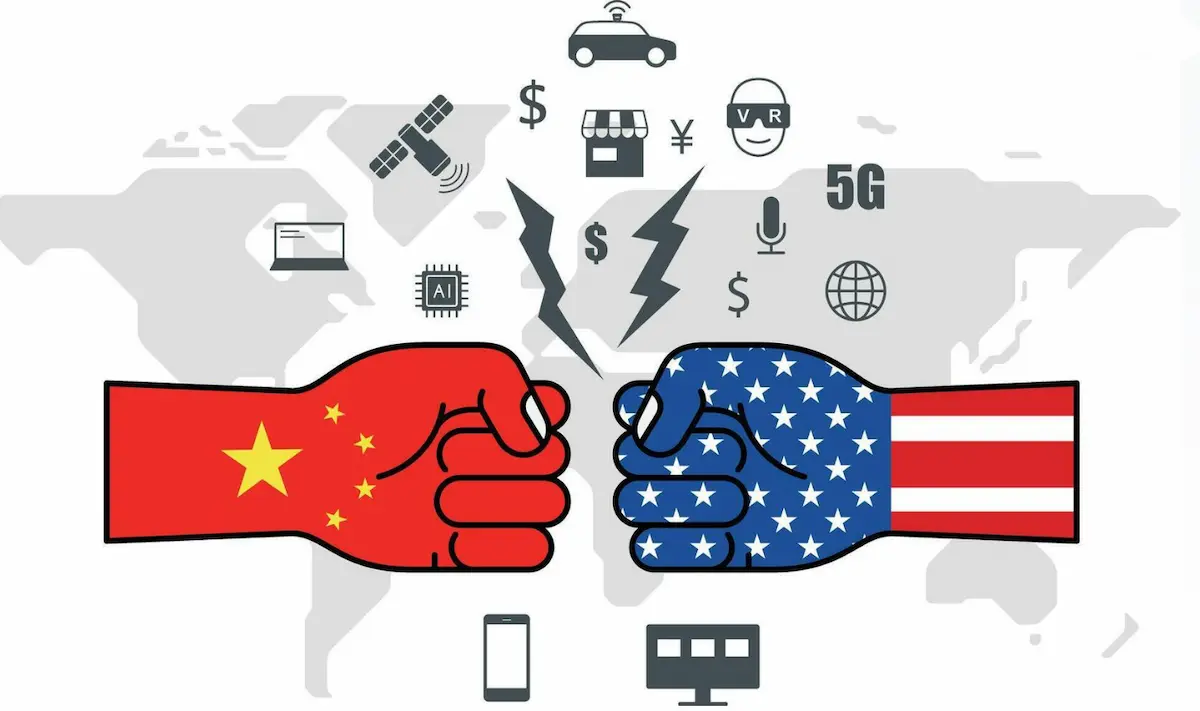In 2025, the U.S.-China trade conflict escalated beyond tariffs into a strategic battle over critical resources and technology. China’s imposition of export controls on rare earth elements and retaliatory actions against U.S. tech firms marked a significant shift, impacting global supply chains and prompting a reevaluation of economic dependencies. As the world watches this next chapter unfold, the broader implications extend into geopolitics, industrial policy, and the future of globalization itself. Explore China’s 2025 countermeasures to U.S. tariffs, including rare earth export controls and tech sector retaliation, and their implications for American businesses.
This article offers a detailed exploration of China’s countermeasures, the industries most affected, and the strategic ripple effects already reshaping global commerce. It includes real-time data, expert analysis, and forward-looking insights from Mattias Knutsson, a Strategic Leader in Global Procurement and Business Development.
China’s Export Controls on REEs: Targeting the Heart of Modern Industry
China, dominating approximately 90% of global rare earth production, implemented export restrictions on seven heavy rare earth elements and associated magnets. These materials are essential for a wide array of sectors, including:
- Defense systems (radar, missile guidance)
- Consumer electronics (smartphones, laptops)
- Renewable energy (wind turbines, solar panels)
- Automotive (electric vehicles)
Key Restricted Elements:
- Samarium
- Gadolinium
- Terbium
- Dysprosium
- Lutetium
- Scandium
- Yttrium
The new export control regime requires Chinese firms to obtain licenses to ship these critical materials abroad, a bureaucratic hurdle that has already caused disruptions in production schedules across the globe.
Tariffs Impact on U.S. Industries: A Wide Net of Disruption
The export controls have immediate and cascading effects for U.S. industries:
- Defense Sector: Rare earth shortages impact advanced weapons manufacturing, satellites, and cybersecurity systems. The Pentagon has sounded alarms about supply vulnerabilities.
- Electronics and Renewable Energy: Companies like Apple, General Electric, and Tesla face sourcing challenges for critical components. Expect delays in product launches and increased prices.
- Automotive Industry: The electric vehicle boom in the U.S. now faces significant bottlenecks, forcing companies to either delay EV rollouts or seek expensive alternative materials.
| Sector | Projected Cost Increase (%) | Major Companies Impacted |
|---|---|---|
| Defense | 15-20% | Lockheed Martin, Raytheon |
| Consumer Electronics | 8-12% | Apple, Dell, Microsoft |
| Renewable Energy | 10-14% | Tesla, GE Renewable Energy |
China’s Broader Retaliatory Measures: Expanding the Economic Front
Beyond rare earths, China has launched a broader suite of countermeasures:
- Tariff Increases: Up to 125% tariffs on various U.S. imports, including agricultural products, cars, and microchips.
- Unreliable Entity List Expansion: Major U.S. tech companies and defense contractors have been blacklisted, facing operational restrictions within China.
- Export Control Lists: Expanded to include high-end consumer tech and critical machinery imports from the U.S.
This broad, multi-layered retaliation strategy signals that China is prepared for a prolonged economic struggle and aims to pressure not just the U.S. government but also American corporations and supply chains.
Global Supply Chain Repercussions: A Race for Alternatives
The rare earth restrictions and tech retaliations are catalyzing a massive reconfiguration of global supply chains:
- Allied Responses: Australia, Canada, and Japan are ramping up rare earth production.
- Corporate Shifts: U.S. companies are fast-tracking supply diversification programs.
- Investment in Recycling: Recycling rare earths from electronic waste is gaining traction as a potential alternative.
Market Response:
- MP Materials Corp (MP): Stocks have surged by over 30% since April 2025.
- VanEck Rare Earth/Strategic Metals ETF (REMX): Up 18% year-to-date.
- Lynas Rare Earths (Australia): Announced a new $1B processing facility in Texas.
Strategic Implications: Redefining Global Power Dynamics
The 2025 developments are much more than tit-for-tat trade moves—they represent a fundamental shift in the global balance of power:
- Industrial Policy Overhaul: Both the U.S. and EU are intensifying incentives for local critical material production.
- Tech Spheres of Influence: Decoupled supply chains are creating new technology blocs: U.S.-EU-Japan vs. China-ASEAN.
- Financial Markets: Rare earth prices have surged by an average of 42% in 2025, with further volatility expected.
This is not simply a trade dispute—it is a strategic realignment that will influence global economics and security for decades.
Conclusion:
China’s response to the 2025 tariff escalation has redefined the battleground. No longer restricted to tit-for-tat tariff increases, the contest now includes rare earths, consumer technology, and deep systemic shifts in supply chain thinking.
Businesses must prepare for a world where resource nationalism, technological sovereignty, and supply resilience are as crucial as traditional market access. Governments, too, must rethink industrial policy in an era where access to raw materials can be weaponized as powerfully as any tariff.
Mattias Knutsson, Strategic Leader in Global Procurement and Business Development, offers a strategic closing reflection:
“Global business strategies must now be built on resilience rather than pure cost optimization. The companies that survive and thrive will be those that anticipate geopolitical risks, diversify supply chains, and invest in redundancy.”
As the dust settles on this new phase of the U.S.-China conflict, one thing is clear: the future of global trade will be shaped not just by economics, but by strategy, security, and resilience.





